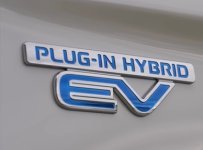Choosing between a hybrid and a plug-in hybrid (PHEV) can be a tough decision, as both have distinct advantages depending on your driving habits, budget, and environmental priorities. Here's a detailed comparison to help you decide which one might be the better option for you:
1. Overview: Hybrid vs. Plug-In Hybrid
Hybrid (HEV):
A traditional hybrid vehicle combines a gasoline engine with an electric motor. The electric motor assists the engine, primarily improving fuel efficiency and reducing emissions. The battery is charged through regenerative braking and the internal combustion engine (ICE), so there's no need to plug in.
Example: Toyota Prius
Plug-In Hybrid (PHEV):
A plug-in hybrid also combines a gasoline engine with an electric motor, but it has a larger battery that can be charged by plugging into an external power source. This allows PHEVs to drive a certain distance on electric power alone before switching to hybrid mode, where the gasoline engine kicks in.
Example: Toyota Prius Prime

2. Electric Range and Fuel Efficiency
Hybrid:
Electric Range: Limited. Hybrids cannot run solely on electric power for extended distances. They use electric power primarily for low-speed driving and assisting the gasoline engine.
Fuel Efficiency: Hybrids are very efficient, often achieving higher miles per gallon (MPG) than traditional gasoline cars. They are ideal for city driving, where the electric motor can assist more frequently.
Plug-In Hybrid:
Electric Range: Typically, PHEVs can travel between 20-50 miles (32-80 km) on electric power alone, depending on the model. After the electric range is exhausted, they operate like regular hybrids.
Fuel Efficiency: PHEVs can be more efficient than hybrids, especially if your daily commute is within the electric range, allowing you to drive without using gasoline. Over longer distances, once the battery is depleted, the fuel efficiency becomes similar to or slightly less than a regular hybrid due to the additional weight of the larger battery.
3. Charging Requirements
Hybrid:
Charging: No need to plug in. The battery is charged automatically through regenerative braking and the engine.
Plug-In Hybrid:
Charging: Requires plugging into an external power source (home charger, public charging station). Charging times vary from a few hours with a Level 2 charger to overnight with a standard 120V outlet. If you don’t regularly charge your PHEV, you won’t get the full benefit of its electric range.
4. Cost Considerations
Hybrid:
Purchase Price: Generally less expensive than PHEVs due to the smaller battery and less complex powertrain.
Operational Costs: Lower operational costs if used frequently in city driving where the electric motor assists more often, reducing fuel consumption.
Plug-In Hybrid:
Purchase Price: Typically more expensive upfront due to the larger battery and additional technology. However, there may be federal or state incentives that lower the effective purchase price.
Operational Costs: Lower operational costs if you maximize the electric range by charging regularly. Electricity is cheaper than gasoline, so driving on electric power can be significantly less expensive.
5. Environmental Impact
Hybrid:
Emissions: Lower emissions than traditional gasoline vehicles due to improved fuel efficiency and the use of electric power at low speeds.
Plug-In Hybrid:
Emissions: Potentially lower emissions than hybrids if driven mostly on electric power. However, emissions increase once the gasoline engine is in use, particularly if the battery isn’t regularly charged.
Youtube
1. Overview: Hybrid vs. Plug-In Hybrid
Hybrid (HEV):
A traditional hybrid vehicle combines a gasoline engine with an electric motor. The electric motor assists the engine, primarily improving fuel efficiency and reducing emissions. The battery is charged through regenerative braking and the internal combustion engine (ICE), so there's no need to plug in.
Example: Toyota Prius
Plug-In Hybrid (PHEV):
A plug-in hybrid also combines a gasoline engine with an electric motor, but it has a larger battery that can be charged by plugging into an external power source. This allows PHEVs to drive a certain distance on electric power alone before switching to hybrid mode, where the gasoline engine kicks in.
Example: Toyota Prius Prime

2. Electric Range and Fuel Efficiency
Hybrid:
Electric Range: Limited. Hybrids cannot run solely on electric power for extended distances. They use electric power primarily for low-speed driving and assisting the gasoline engine.
Fuel Efficiency: Hybrids are very efficient, often achieving higher miles per gallon (MPG) than traditional gasoline cars. They are ideal for city driving, where the electric motor can assist more frequently.
Plug-In Hybrid:
Electric Range: Typically, PHEVs can travel between 20-50 miles (32-80 km) on electric power alone, depending on the model. After the electric range is exhausted, they operate like regular hybrids.
Fuel Efficiency: PHEVs can be more efficient than hybrids, especially if your daily commute is within the electric range, allowing you to drive without using gasoline. Over longer distances, once the battery is depleted, the fuel efficiency becomes similar to or slightly less than a regular hybrid due to the additional weight of the larger battery.
3. Charging Requirements
Hybrid:
Charging: No need to plug in. The battery is charged automatically through regenerative braking and the engine.
Plug-In Hybrid:
Charging: Requires plugging into an external power source (home charger, public charging station). Charging times vary from a few hours with a Level 2 charger to overnight with a standard 120V outlet. If you don’t regularly charge your PHEV, you won’t get the full benefit of its electric range.
4. Cost Considerations
Hybrid:
Purchase Price: Generally less expensive than PHEVs due to the smaller battery and less complex powertrain.
Operational Costs: Lower operational costs if used frequently in city driving where the electric motor assists more often, reducing fuel consumption.
Plug-In Hybrid:
Purchase Price: Typically more expensive upfront due to the larger battery and additional technology. However, there may be federal or state incentives that lower the effective purchase price.
Operational Costs: Lower operational costs if you maximize the electric range by charging regularly. Electricity is cheaper than gasoline, so driving on electric power can be significantly less expensive.
5. Environmental Impact
Hybrid:
Emissions: Lower emissions than traditional gasoline vehicles due to improved fuel efficiency and the use of electric power at low speeds.
Plug-In Hybrid:
Emissions: Potentially lower emissions than hybrids if driven mostly on electric power. However, emissions increase once the gasoline engine is in use, particularly if the battery isn’t regularly charged.
Youtube
